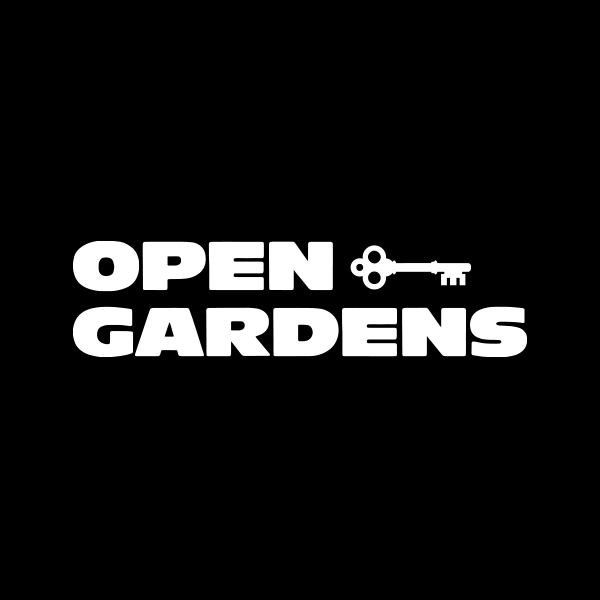State of the Union: Open Gardens at 100 Posts
Last Friday, Open Gardens published its 100th post.
For seven months, we’ve kept a steady rhythm:
Mondays — Deep Dives (usually me, with Mitch Camarda pinch hitting on occasion).
Wednesdays — OG: Approved (Mitch curating the sharpest creator voices in the space).
Fridays — The Garden Harvest (Fernando Morett tracing the overlap between legacy media and the creator economy).
When we started this Substack back in February—barely a month after losing my house in the Palisades fire—it wasn’t about audience. It was about survival.
About forcing myself to keep moving, keep thinking, keep shaping. That’s still the metaphor for the industry itself: don’t freeze, keep building, understand the future by making it.
Why I launched Open Gardens
I had two impulses:
Convergence was inevitable. Creators would need the wisdom and craft of 100 years of content creation; Hollywood would need the community engines that creators had already mastered.
I needed to figure out how my company could play inside that convergence.
I’ve seen three very different reactions from the Legacy players to the shifting landscape:
Denial: “Creators aren’t real.”
Fear/Curiosity: “This is shifting—help me understand it.”
Exit Stage Left: “The magic is gone. I’m out.”
I sat in the second camp, toggling minute by minute between dread and fascination. Writing Open Gardens was my way of staying with the fear long enough to see the opportunity.
Patterns across 100 posts
Looking back, here are the through-lines that keep surfacing:
Community is the real currency. The most durable plays—whether by creators, brands, or studios—build communities, not just audiences.
Legacy is infrastructure, not IP. Hollywood’s true value is its production wisdom, financing models, distribution muscle, and storytelling craft—the “hundred years of know-how” the creator economy will tap.
Creators scale by emotion, not format. The DNA of digital hits isn’t clever hooks or algorithms—it’s repeatable emotional concepts (“wonder,” “survival,” “chaos”) that unlock scale.
Capital is moving faster than culture. Venture money, M&A, and strategic partnerships often see the convergence more clearly than executives clinging to old models.
The middle is disappearing. Development deals and mid-budget content struggle, while creator-driven verticals thrive on speed, iteration, and community reinforcement. The same squeeze exists in the creator world: a tiny elite commands massive reach and resources, while a vast working class fights to break out—separated by a widening gap with almost nothing in between.
Legacy players want in—but don’t know how. The constant refrain: “How do I finance a YouTube show?” The appetite is there, but the mindset reset is massive.
Diversifying portfolios isn’t just survival—it’s the opportunity. Creators who layer content with commerce, live experiences, and brand plays aren’t hedging; they’re compounding. Legacy media has to treat diversification as core strategy, not optional.
Information and education don’t stop moving. Staying relevant means constantly updating your mental hard drive. Platforms like Substack and Beehiiv matter not just as distribution tools, but as live maps of an industry in motion.
The OpenVerse is real. I may have coined the phrase, but the idea is undeniable: there are massive, open communities that aren’t “owned” by anyone yet. Vertically constructed companies like Teton Ridge, which stitch together content, commerce, and culture around those communities, are going to be some of the most interesting places to build or place bets.
No fixed structure = a million models. The creator economy is still fluid. Business models that work brilliantly one week can collapse the next. That volatility is both the risk and the upside.
Where we want to look next
The first 100 posts were about mapping the terrain. The next 100 will be about digging deeper into the engines of the flywheel. A few areas we will be especially focused on:
Live events. The best hedge against AI is real-world gathering. We want to study how creators, studios, and brands can organize and scale experiences that reinforce community.
AI integration. Not just the hype cycle, but the ways AI will quietly morph business models, content workflows, and audience behavior.
Equity and capital flows. Our prediction: the biggest creators will begin rolling up smaller creators and businesses, and even start absorbing legacy operations through acqui-hires.
International markets. As U.S. growth slows, money will look outward. We want to track how capital, talent, and formats scale across Latin America, Asia, Africa, and beyond.
Technology and scale. What are the new infrastructures—tools, platforms, protocols—that will let creators and studios build faster and bigger?
Gen Z and Gen Alpha. The next audiences are already shaping behaviors. We want to read the tea leaves with experts who see where culture is heading.
The atomization of communities. Culture is fragmenting into countless micro-communities, each with its own codes and rituals. We want to explore how to build businesses that can thrive when “community” is no longer a mass but a mosaic.
Vertical storytelling. Some people read left to right, others right to left, but everyone swipes up. Vertical isn’t going away. In anticipation of this massive swing, we are bringing in someone to research verticals and will start launching a weekly post on Thursdays called The Micro Bloom. This weekly series will cover all things vertical and micro drama related. As seen across the industry, this is what’s next and we will be tracking it from the investment level down to the creative level.
Open Gardens started as a way to process grief and uncertainty. It’s become something bigger: a community of people across Hollywood, tech, and the creator economy trying to make sense of the same convergence.
The question isn’t whether it’s happening. It’s how fast—and how intentionally—we shape it.
Here’s to the next 100 posts.
-Ben




Congrats on the milestone!
I need to go through the back catalog—I joined late. You’ve got some of the freshest insights on where this all is headed. Here’s to the next 100.